By Koji Kumeta | Volumes 1-8 published by Del Rey, Volumes 9-10 published by Kodansha Comics
 When I first set out to read Koji Kumeta’s Sayonara, Zetsubou-sensei, my goal was to finish the first eight volumes in time for Kodansha’s June 2011 release of volume nine.
When I first set out to read Koji Kumeta’s Sayonara, Zetsubou-sensei, my goal was to finish the first eight volumes in time for Kodansha’s June 2011 release of volume nine.
You can see how well that worked out.
The problem was that this series simply doesn’t benefit from a marathon read. After four volumes, I burnt out and switched to reading it a chapter at a time as the mood struck me. Obviously, it took a lot longer this way, but turned out to be the ideal manga to read on breaks at work or while sitting around in the lobby of the doctor’s office. Interestingly, I found the most recent volumes to be so good that devouring them in their entirety was no problem at all!
There’s not a whole lot of plot to Zetsubou-sensei. Nozomu Itoshiki, the fourth son of a wealthy family, is a high school teacher with a penchant for nineteenth century garb. The title of the manga refers to the fact that when the characters of his name are written too closely together, they can be read as “zetsubou,” or “despair.” Which is convenient, since despairing over various things (and occasionally trying to kill himself) is Itoshiki’s specialty. His class is full of a variety of quirky students, whom we meet gradually, including a girl who sees everything positively, a methodical and precise (and possibly homicidal) girl, a girl who speaks only in text messages, a stalker, a fujoshi, an impoverished housewife, etc. We also meet a few members of his family, including his brother Mikoto, a doctor whose name can be read as “zetsumei,” or “certain death.”
 Each chapter follows more or less the same pattern: the first couple of pages establish where the characters are, then something sets Itoshiki off on a rant. (For example, a hinamatsuri display inspires a diatribe about heirarchical societies.) Eventually he spews out a list of items that correspond to the topic of the day. Then the positive girl (Kafuka) will put forth a different opinion and, a couple of pages later, the chapter ends. As I’ve described it, this sounds tedious, but it’s often quite clever and absurd.
Each chapter follows more or less the same pattern: the first couple of pages establish where the characters are, then something sets Itoshiki off on a rant. (For example, a hinamatsuri display inspires a diatribe about heirarchical societies.) Eventually he spews out a list of items that correspond to the topic of the day. Then the positive girl (Kafuka) will put forth a different opinion and, a couple of pages later, the chapter ends. As I’ve described it, this sounds tedious, but it’s often quite clever and absurd.
Some chapters are more Japanese-centric than others, with copious references to entertainers and public figures or topics specific to Japan, like tanabata or fukubukuro. These can be somewhat less fun to read, especially in earlier volumes when the (admittedly thorough) end notes provide so much information that one ends up reading the book with a finger permanently lodged in the back to reference the explanation as needed. With a change in translator for volume five, most of these notes disappeared.
 At first, I was bothered by knowing there were all sorts of references I was missing, but in the end I think I prefer to just cope with ignorance; it helps that more recent volumes have dealt with some universal topics like dream endings, assumptions, jokes you’ve heard a million times, how we perceive the passage of time, modern conveniences leading to inconvenience (“Thanks to Amazon,com, we’ve got piles of books that we haven’t had time to read”), skewed priorities, gifts you feel obliged to accept, and getting sucked into other people’s drama. Somewhat to my surprise, it feels like we’re beginning to learn a little bit more about the characters, as well.
At first, I was bothered by knowing there were all sorts of references I was missing, but in the end I think I prefer to just cope with ignorance; it helps that more recent volumes have dealt with some universal topics like dream endings, assumptions, jokes you’ve heard a million times, how we perceive the passage of time, modern conveniences leading to inconvenience (“Thanks to Amazon,com, we’ve got piles of books that we haven’t had time to read”), skewed priorities, gifts you feel obliged to accept, and getting sucked into other people’s drama. Somewhat to my surprise, it feels like we’re beginning to learn a little bit more about the characters, as well.
In addition to following the established formula in terms of chapter progression, there are also several recurring gags in Zetusbou-sensei. I’m not very fond of the poor dog with a stick in its butt who appears on occasion, but the creative ways Kumeta finds to insert a panty shot from a particular character are kind of fun, and I’m quite fond of Itoshiki’s stalker, Matoi, who suddenly pops up in the middle of scenes, surprising the characters. “You were here?” And the way in which the characters continue to fail eleventh grade and must repeat it pokes fun at those series—Ouran High School Host Club is the most notorious example to come to mind—where seasons pass but the characters inexplicably fail to graduate.
 Artistically, Sayonara, Zetsubou-sensei has a very unique look. Kumeta uses very little screen tone, and all of his characters (except one) have pitch-black hair and eyes. There are many girls in the cast, but they all have distinctive hairstyles. Even if I can’t remember someone’s name, her hairstyle will clue me in. “Oh, that’s the delusional self-blaming girl!” Kumeta’s got a recurring trick for page layout too: frequently, a character will be drawn full-length to one side of the page and depicted with extremely skinny ankles and extremely large feet. In more recent volumes it seems that facial closeups are happening more often, or that characters are being viewed from some new angles, which is a welcome development.
Artistically, Sayonara, Zetsubou-sensei has a very unique look. Kumeta uses very little screen tone, and all of his characters (except one) have pitch-black hair and eyes. There are many girls in the cast, but they all have distinctive hairstyles. Even if I can’t remember someone’s name, her hairstyle will clue me in. “Oh, that’s the delusional self-blaming girl!” Kumeta’s got a recurring trick for page layout too: frequently, a character will be drawn full-length to one side of the page and depicted with extremely skinny ankles and extremely large feet. In more recent volumes it seems that facial closeups are happening more often, or that characters are being viewed from some new angles, which is a welcome development.
On the whole, I enjoyed Sayonara, Zetsubou-sensei a great deal. I felt that it improved as it went along, and I look forward to remaining current with the series henceforth. It may not have made me laugh aloud continuously, but it was always amusing enough to make me smile, and it’s to its credit that it was still capable of making me giggle in its 100th chapter.
Sayonara, Zetsubou-sensei: The Power of Negative Thinking was originally published in English by Del Rey, who put out the first eight volumes, but is now being published by Kodansha Comics. The series is ongoing in Japan; volume 27 came out there earlier this week.
Review copies for volumes five, seven, eight, and ten provided by the publisher.




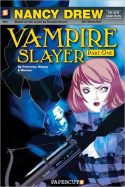











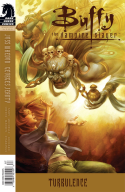
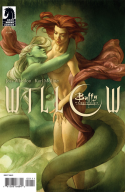

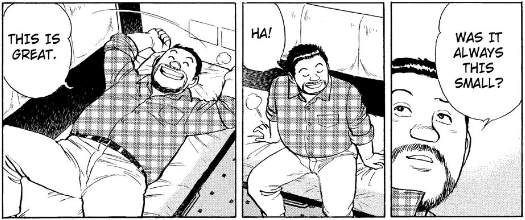
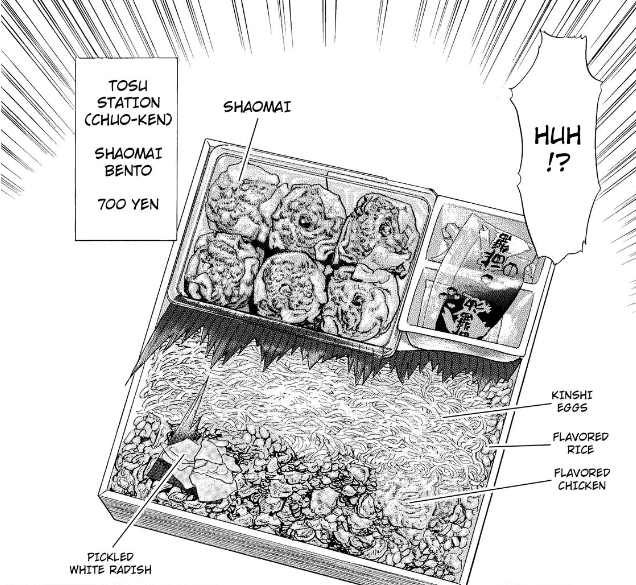
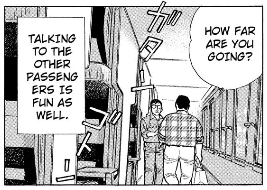











Recent Comments